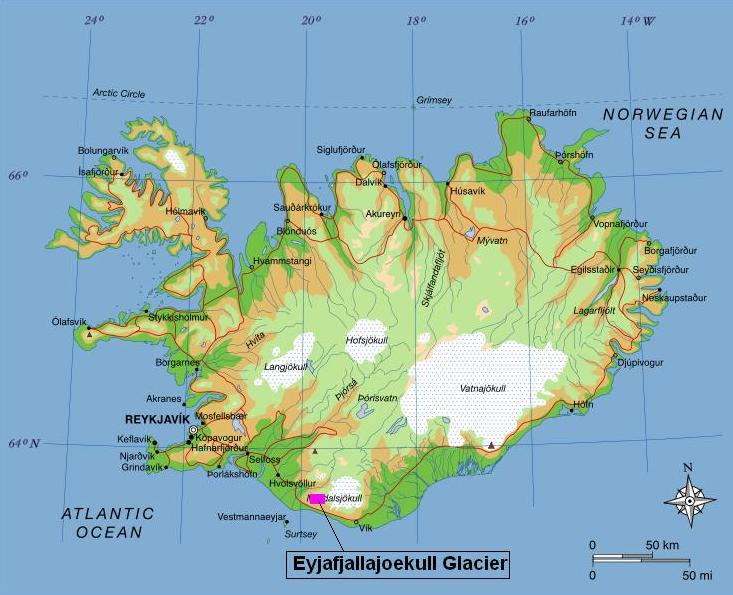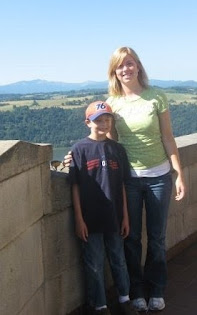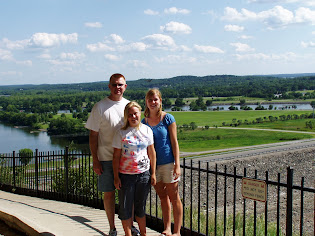1. LOCATION The volcano is located just off the coast of Ireland in Eyjafljallajokull. Eyjafljallajokull is one of the smaller glaciers of Ireland and is located to the West of Mýrdalsjökull and to the North of Skógar. It's location at the SW side of Ireland places the volcano in close proximity to the United Kingdom, who consequently must also deal with the effects of the volcanic eruptions.
2. PHYSICAL The volcano is hidden beneath the glaciers icecap and was most active in the last glacier period (1821-1823). Earthquakes and earth crust expansion were detected earlier this year, which signaled to geophysicists that magma was filling the magma chamber of Eyjafljallajokull. Meltwater floods accompanied the first eruption. They are termed a meltwater floods because during the eruption a large amount of glacial ice melts from the icecap and pours into the surrounding rivers.
 3. ECONOMICS The volcanic eruption which followed sent volcanic ash soaring into the sky, estimated to have traveled several kilometers. This ash disrupted air travel for six days. Six days of grounded airplanes meant a drastic loss in revenue for European flight companies. "Airlines are said to be losing £1million an hour while planes remain on the ground and their trade bodies have criticised ministers for their 'blanket approach' to the crisis, claiming they have overreacted and been slow to assess the full situation." (Daily Mail)
3. ECONOMICS The volcanic eruption which followed sent volcanic ash soaring into the sky, estimated to have traveled several kilometers. This ash disrupted air travel for six days. Six days of grounded airplanes meant a drastic loss in revenue for European flight companies. "Airlines are said to be losing £1million an hour while planes remain on the ground and their trade bodies have criticised ministers for their 'blanket approach' to the crisis, claiming they have overreacted and been slow to assess the full situation." (Daily Mail)4. MOVEMENT OF PEOPLE/TRANSPORTATION As discussed regarding the economy, the volcano has made a huge impact on the travel industry. Transportation by air is very difficult for those living in or near Ireland. It has also displaced many people. For example, 800 people were displaced after the first eruption by the meltwater floods.
5. POLITICS Due to economic frustration of the airlines, the airlines are challenging how the government officials handled the situation. They complain that the safety measures placed on Europe regarding air travel were too harsh and were placed too quickly without proper assessment of the situation.































